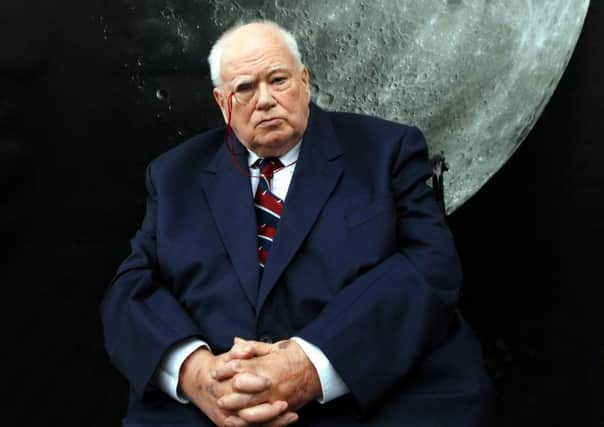Sir Patrick Moore archive acquired by Science Museum


Renowned as a writer and researcher in the field of astronomy and as presenter of the BBC’s The Sky at Night for more than 50 years, Sir Patrick died two years ago today, on December 9, 2012.
Since 1968, Sir Patrick had lived and worked at Farthings, his home in Selsey, building up an extensive personal archive related to his astronomical research and work in popularising astronomy.
Advertisement
Hide AdAdvertisement
Hide AdLead guitarist of Queen Brian May, who has a PHD in astrophysics and was a close friend of Sir Patrick Moore, said: “We, Patrick’s friends and executors, have worked for a year to try to find the most fitting home for his core astronomical and personal archive.
“We’re thrilled that the Science Museum has now agreed to give this precious resource a home.
“We’re sure Patrick would be honoured that his legacy – a national treasure – will be in the perfect place, safe in Britain’s top scientific museum, with plans for the material to be accessible to future generations.
“We feel there is no more fitting resting place for Patrick’s legendary life’s work.”
Advertisement
Hide AdAdvertisement
Hide AdThe objects and written material acquired by the Science Museum illustrate Sir Patrick’s many years of work in the UK amateur astronomy community, and his success in bringing astronomy to wider audiences.
The collection includes draft scripts and memorabilia from his time as presenter of the The Sky At Night, which still holds the record as the longest-running television series with the same original presenter.
The archive contains approximately 70 of Sir Patrick’s observation books, featuring more than 60 years’ worth of detailed drawings and records of the night skies, as well as manuscripts for the significant number of astronomy and fiction books the wrote.
Among the objects acquired by the Science Museum is a 12.5-inch reflecting telescope which Sir Patrick nicknamed Oscar and used for mapping the Moon.
Advertisement
Hide AdAdvertisement
Hide AdDeputy keeper of science and medicine at the museum Alison Boyle said: “Sir Patrick Moore was a towering figure in astronomy and broadcasting during a remarkable career spanning most of the 20th century.
“This archive will help to inform the Museum’s future astronomy and space displays, and will become an important resource for all historians of popular astronomy.”
Sir Patrick Moore’s archive will be kept at the Science Museum Library & Archives, at Wroughton, Wiltshire, where, once it has been catalogued, it will be available to the public for research purposes.
About Sir Patrick
Patrick Moore (1923-2012) was involved in amateur astronomy from an early age, joining the British Astronomical Association at the age of just 11.
Advertisement
Hide AdAdvertisement
Hide AdDuring his long career as an amateur astronomer he became well known for his work on mapping the Moon – used during the 1950s by US and USSR teams planning robotic and crewed missions – and his longstanding association with the British Astronomical Association, Society for Popular Astronomy and other organisations.
He created the Caldwell Catalogue of 109 deep-sky objects (star clusters, nebulae and galaxies) to assist amateur astronomers in their observations.
Sir Patrick became famous as presenter of The Sky at Night, one of the world’s longest-running TV programmes.
He hosted the first episode on April 24, 1957, and following the launch of Sputnik six months later, became one of the leading UK commentators on the new space race.
Advertisement
Hide AdAdvertisement
Hide AdAuthor of hundreds of popular astronomy works, his output also included fiction and musical works. He was knighted in 2001 for his work in astronomical popularisation and broadcasting and in the same year was elected an Honorary Fellow of the Royal Society.
The Science Museum Library and Archives
The Science Museum Archives hold archives of some of the most famous and influential individuals and companies in the fields of science, medicine, engineering and industry.
For further information about some of the latest acquisitions by the Science Museum visit: www.sciencemuseum.org.uk/about_us/collections/acquisitions.aspx.
The Science Museum library is recognised as one of the world’s great research libraries for the history of science and technology.
Advertisement
Hide AdAdvertisement
Hide AdWith more than 500,000 items, the Science Museum collections include archives and original works that have shaped our understanding of the world, from Newton to Babbage and Einstein.
A new Research Centre with library facilities will open at the Science Museum in late 2015.
For further information visit: www.sciencemuseum.org.uk/about_us/collections/science_library.aspx.